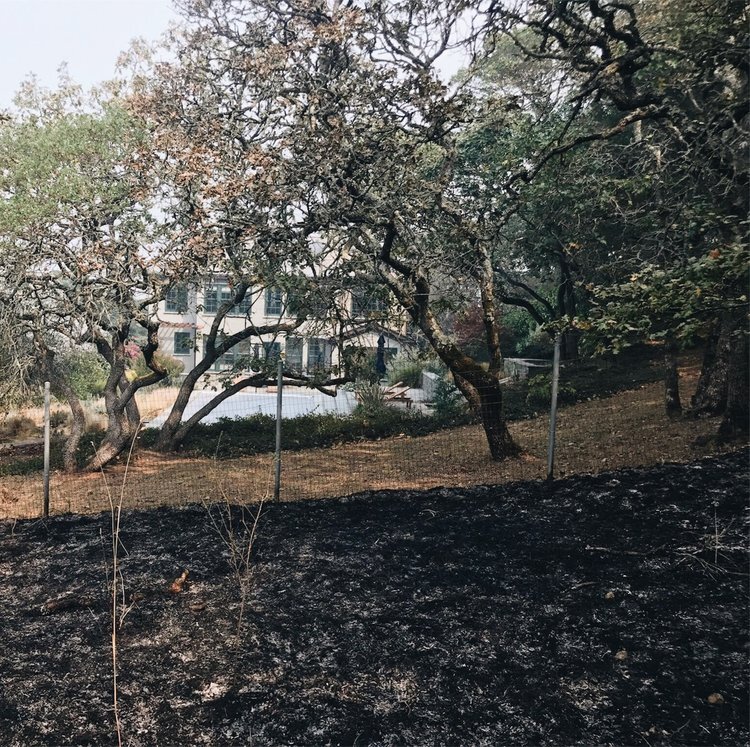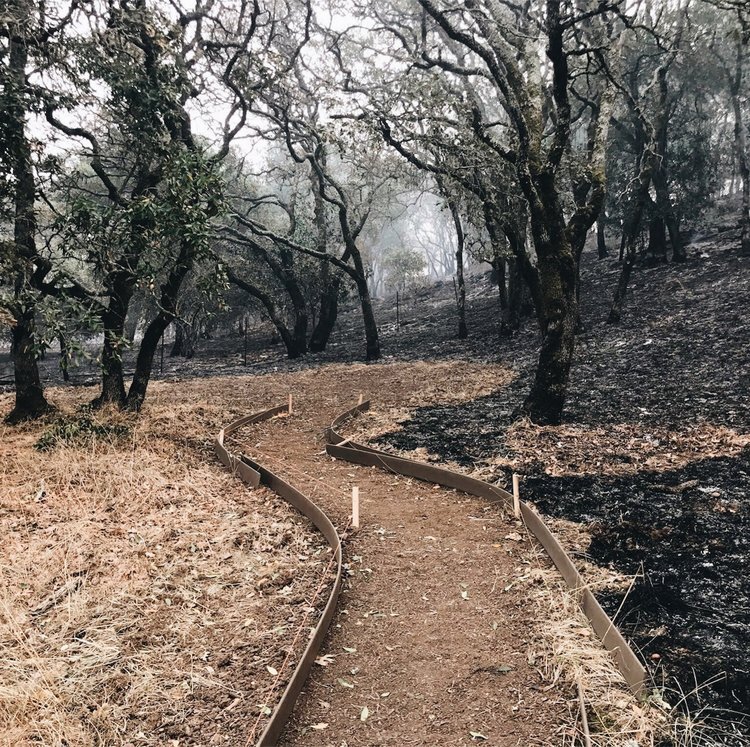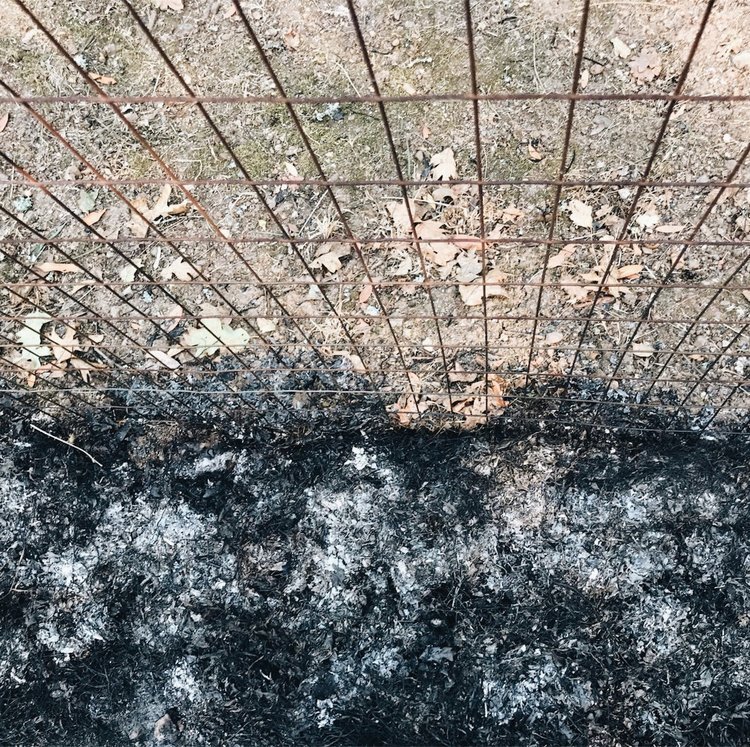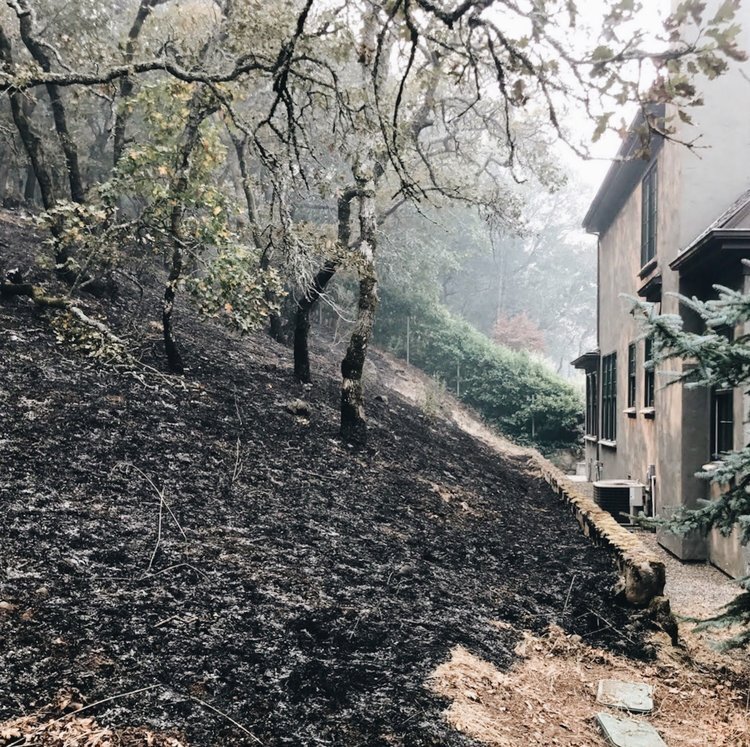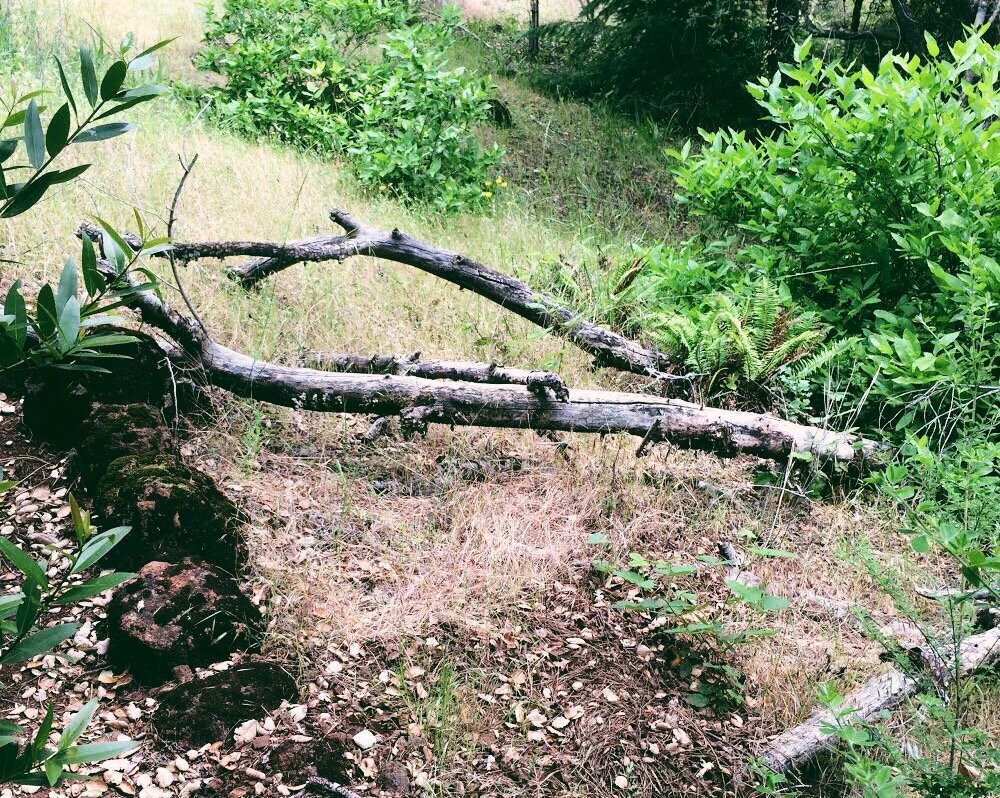Can Your Yard Save Your House from Fire?
At YardKit, we love sharing tips and tricks with homeowners improving their yards. Have an idea you'd like us to cover? Email us at hello@yardkit.com.
At the YardKit headquarters near San Francisco, the end of the summer into early fall has become known as “fire season.” Ash from wildfires across the West drifts in amber plumes for weeks on end, turning the sun amber and casting neighboring buildings as silhouettes. It feels as if you’re living by a campfire.
As many of us now know all too well, wildfires have spread quickly. Dry chaparral is the perfect tinder for the flames (especially if you live in an area recently affected by drought). In 2016 alone, over 65,000 separate fires charred nearly 5.5 million acres across the country. Arizona, California, Colorado, Idaho, and Montana top the list for states at highest risk. The risk climbs higher every year.
Seeing images like these, of a friend's house in Sonoma affected by the Tubbs Fire, got us thinking about how you can prevent fires through your landscape, a.k.a. “firescaping.” As a homeowner, making a few simple changes to your yard can protect your house from capricious flames and help prevent wildfires from spreading without restraint. Here are a few fire prevention tips.
Start with the Zone Strategy
Imagine three concentric circles, like a bullseye, radiating from the center of your house. Each of these rings is a zone of “defensible space,” or degrees of fire-safety. You’ll want to change up your plant and material choices as you move closer to your home.
ZONE 1 / the 30' ring closest to your house
Keep plants to a minimum here, and rely exclusively on only the most fire-resistant and low-growing plants. Water lawns and plants regularly.
Go heavy on paving and gravel (these areas are great spots for patios and pathways)
Avoid overhangs and tree canopies that reach over rooftops — tree limbs should be at least 15 feet away from structures and power lines.
Be vigilant about cleaning up plant debris.
ZONE 2 / 30 to 50 feet away
Add another layer of defense with low-growing succulents and groundcovers fed by an irrigation system. Fire-resistant and drought-tolerant plants are your best bet.
Keep seasonal grasses and conifers, with their highly flammable content, out of this area.
Leave a 15-foot wide space between trees. Pick deciduous species when possible.
Small structures like gazebos, sheds, or playgrounds should be in Zones 2 or 3, to keep flames from jumping to rooftops, as should wood piles and firepits.
ZONE 3 / 50+ feet from your house
Rely on drought-resistant shrubs that offer less fuel to a raging fire. Cluster islands of like plants, leaving space between each grouping.
If you have a large property, pluck any interloping fire-prone plants before they spread.
Space shrubs and trees further apart on slopes or hillsides.
Pick Plants Carefully
When plant shopping, focus on locally adapted species and look for a “firewise” icon that some growers include on their plant labels. Nursery favorites for fire-proofing include succulents, serous groundcovers, hearty perennials and shrubs, and deciduous trees.
A few fire-resistant plants for home landscapes to look for (climate depending, of course):
Groundcovers: sedum, stonecrop, gazania, cotoneaster, bearberry, thyme
Perennials: yarrow, daylily, coreopsis, wild strawberry, geranium, iris, red hot poker, heuchera, fuschia, rockrose, poppies
Shrubs: dogwood, spirea, cotoneaster, privet, holly, rhododendron, currant, snowberry, yucca, hydrangea
Trees: maple, alder, dogwood, beech, ash, honeylocust, apple, aspen, cherry, some oaks, and willow
Place Plants by Zones
Think low-growing plants with high moisture content as you move closer toward your home. Deciduous plants are less flammable, and herbaceous species are free of the resins and waxes that feed wildfires.
Dress planted areas with 2” of mulch to lock moisture into the soil below. Be sure to pick a non-flammable mulch material — we’ve actually seen mulch spontaneously combust at a project site! — and pick a material like cocoa shells or pea gravel in planting beds closest to your house.
Keep some space between plants and group them into clusters. Use strips of gravel or paving to create firebreaks between vegetated areas. Walkways, water features, decorative rock patterns, faux riverbeds, and concrete or metal screens are fuel breaks in disguise.
Consider terrain, too: the steeper the hill, the further apart you’ll want to space shrubs and trees.
Create Firebreaks
Bands of non-flammable materials can keep flames from tearing through your property. Pathways, patios, driveways, parking areas, decorative rocks, inorganic mulch, water features, and ponds all provide a break in a fire’s fuel. Anything built from concrete, stone, brick, gravel, decomposed granite, and water is a safe bet.
Think Twice about Firepits
YardKit loves the firepits/fire bowl trend — just take care when purchasing and placing your new element outside. Opt for a propane style, rather than wood-burning, to allow you to turn off the fuel when finished. Place any burning features at least 10 feet from structures or fences, and in an area clear of overhead branches or awnings. (Check local requirements for laws around firepits if you have yet to build one.)
Add a protective screen to cover the top of your feature, and be sure to snuff and cover flames before heading inside, especially if you’re burning wood. Softwoods throw more sparks than hardwoods — oak or hickory logs are good choices. Be sure to use a fire-grade filler like fireglass or lava stone in gas features.
If life’s too busy to not be forgetful, consider switching to a chiminea for that warm glow with contained flames.
Prioritize Maintenance
Staying on top of your yard work is critical to a fire-resistant landscape. Be sure to clear debris like leaves, pine cones, and fallen branches regularly, and most especially in warm months. Gutters, roofs, and areas under decks are often the biggest source of extra fire fuel. Prune dead limbs from your trees in spring, before the summer heat kicks in, and again in fall, after the dry summer months.
Keep your irrigation system in good working order (especially close to your house!) by giving your system a visual inspection twice a year. Plants that receive adequate water are far less likely to burn.
Being mindful of strategies that build your yard's fire resistance while you care for your outdoor spaces, or make decisions around new upgrades, can go a long way in curbing future catastrophes. Our hearts go out to those in the wake of this week's fires.
Have you experienced fire near your home? Have tips to share? Email us at hello@yardkit.com.

